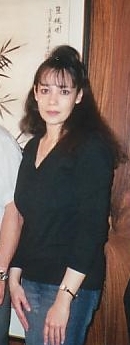Christina Wong: Difference between revisions
mNo edit summary |
mNo edit summary |
||
| Line 24: | Line 24: | ||
'''Documentaries''' | '''Documentaries''' | ||
Her Unsung Heroes was shown at the Second Vancouver Asian Film Festival and the Fourth Annual Sea to Sky Film Festival, 1999 | Her Unsung Heroes was shown at the Second Vancouver Asian Film Festival and the Fourth Annual Sea to Sky Film Festival, 1999. | ||
[http://www.reviewvancouver.org/sp_asianfestival98.htm] | [http://www.reviewvancouver.org/sp_asianfestival98.htm] | ||
[http://www.piquenewsmagazine.com/whistler/s-to-s-film-fest/Content?oid=2174309] | [http://www.piquenewsmagazine.com/whistler/s-to-s-film-fest/Content?oid=2174309] | ||
Unsung Heroes: Chinese Canadians in WW II is a 27 min film documentary produced in 1997. It was funded in part by grant from Government of Canada Year of the Asia Pacific Program. This documentary has been used by the Knowledge Network as part of a fund raising campaign for this Public Television service in B.C. This documentary film contains the last public interview given to a media production by Roy Chan, who at the time was the last surviving member of the Borneo operation. He was part of the 13 Chinese Canadian military regiment engaged in '''Operation Oblivion''' during WW II. | |||
[https://www.veterans.gc.ca/eng/collections/hr_cdnchinese/profile/bongj] | |||
See a recent production. | |||
[http://mediamonkey.ca/operation-oblivion/] | |||
Christina has also produced and directed Chinatown Blues (1997) Rogers Community Television. This documentary profiled renowned Chinese Canadian jazz guitarist Henry Young. | Christina has also produced and directed Chinatown Blues (1997) Rogers Community Television. This documentary profiled renowned Chinese Canadian jazz guitarist Henry Young. | ||
Revision as of 05:14, 19 December 2013
Person
Christina Wong is a television documentary producer, broadcast journalist, and CBC radio producer based in Vancouver, British Columbia.
She recently worked as a Story Consultant in Their Voices Are Still Alive- Jewish Life in Themar, 2013. [1] [2]
In her CBC radio documentary, Shanghai Ladies, aired on Monday, November 29, 2010, painted posters of beautiful women were used to sell all manner of goods in 1920s China. Broadcaster Christina Wong asks if these are images of subservience or liberation.
Listen to Shanghai Ladies
• Summary
At the turn of the 20th century in China, following the Opium Wars, foreign merchants and entrepreneurs set up economic bases in Shanghai. To promote their Western products, they began to print calendar posters to give to their customers. The Chinese had never before been exposed to the Western concept of advertising poster art, so the merchants modified the content of their posters to better suit the tastes and sensibilities of the local market. No matter what a poster was intended to sell, its most important feature was the watercolour reproduction of the lady who graced it. Although some were mere figments of imagination, most of these calendar girls were famous heroines, ladies from history, popular singers, models, and actresses of the day. These beautifully executed images carried the posters and the goods they were selling to the far corners of China and overseas. Today, the originals, many in excellent condition, are collectors' items. And in Chinatowns around the world, you can find reproductions of the advertising posters from the 1920s and 30s, with their portraits of the "modern Chinese woman".
"I first came upon her in Vancouver's Chinatown. I was browsing in a gift shop, and found a stash of vintage posters, circa 1930, with "Made in Shanghai" slogans. They were full of thin, flirtatious women, selling everything, from "powdered milk" to "bug spray!" They seemed to exist in a sort of time warp, babes in mink coats, posing by the riverside, sometimes playing a musical instrument. One, especially, caught my eye. She looked like a Chinese "Mona Lisa" meets "Clara Bow," clutching her pet dog. Her dress was a simple, red-and-white, silk sheath, the Chinese qipao or cheungsam, with its raised mandarin collar and black frog buttons. And those dangling diamond earrings! Above her head, in thick, blood-red Chinese characters, was a banner cry to buy "butterfly" brand silk stockings. A classic sales pitch for the "modern" Chinese woman. Since then, I've been obsessed with the origins of this cosmopolitan figure, Ms. "China Chic". Who is she--in all her various guises, and where did she come from? No offense to my parents, but growing up half-Chinese in our "home and native land" with my "white" ballerina Barbie doll, wasn't harmonious enough. Brushing shoulders with those 'Shanghai lady' types in Chinatown, got me psyched to check out the real women behind these icons! "
- Christina Wong
Documentaries
Her Unsung Heroes was shown at the Second Vancouver Asian Film Festival and the Fourth Annual Sea to Sky Film Festival, 1999. [3] [4]
Unsung Heroes: Chinese Canadians in WW II is a 27 min film documentary produced in 1997. It was funded in part by grant from Government of Canada Year of the Asia Pacific Program. This documentary has been used by the Knowledge Network as part of a fund raising campaign for this Public Television service in B.C. This documentary film contains the last public interview given to a media production by Roy Chan, who at the time was the last surviving member of the Borneo operation. He was part of the 13 Chinese Canadian military regiment engaged in Operation Oblivion during WW II. [5]
See a recent production. [6]
Christina has also produced and directed Chinatown Blues (1997) Rogers Community Television. This documentary profiled renowned Chinese Canadian jazz guitarist Henry Young. [7] [8]
As a reporter for Global Television she worked on a three-part series on Hong Kong immigrants settling in Vancouver, B.C. This was Passport to B.C. (1994).
